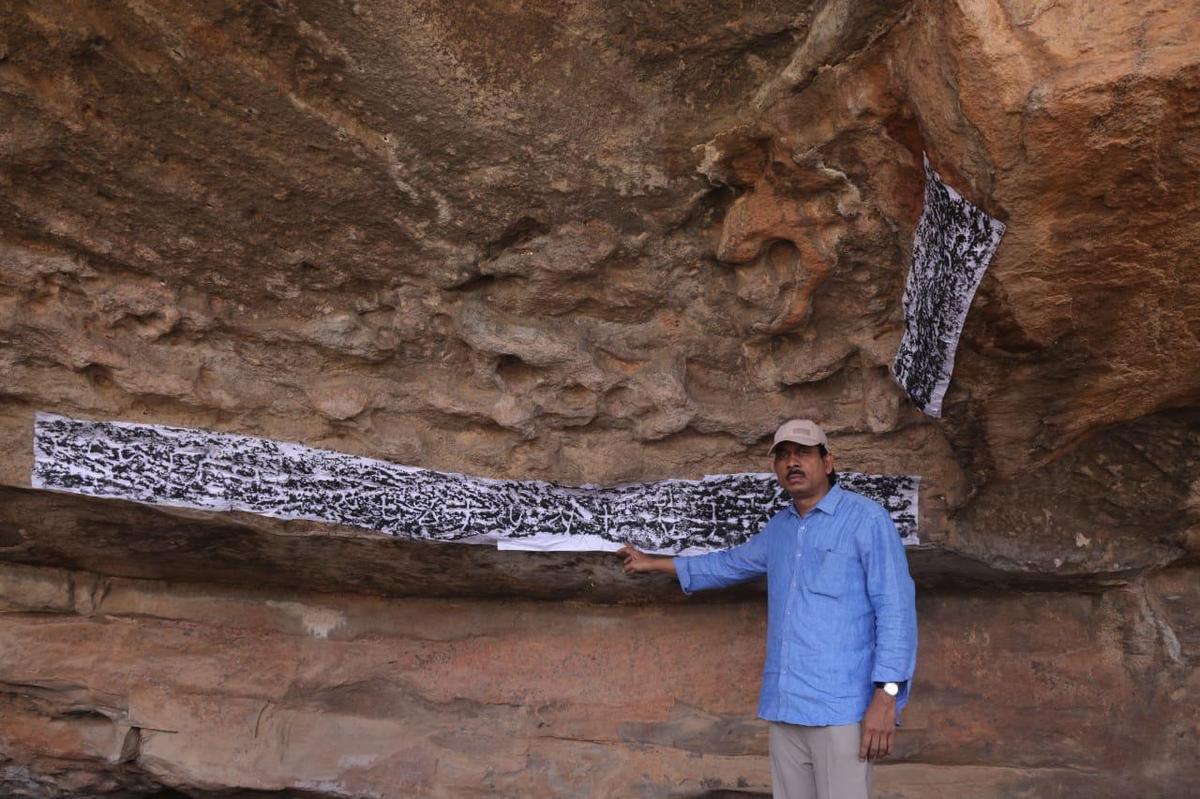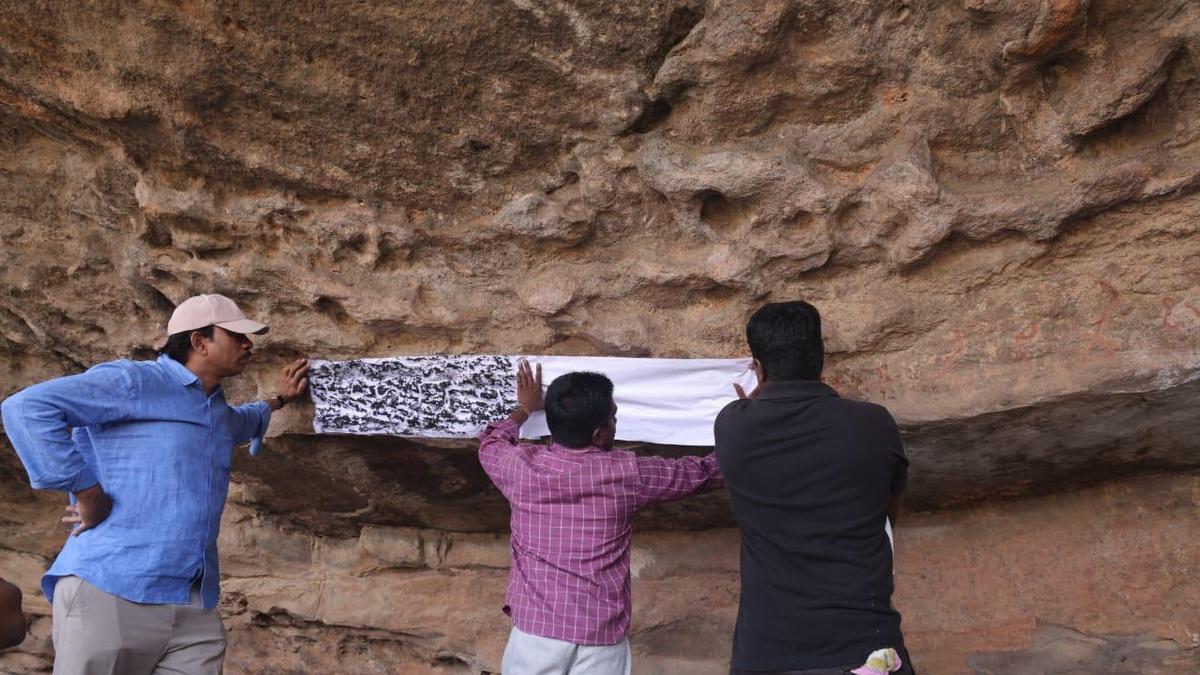
Director (Epigraphy), ASI, K. Munirathnam Reddy’s team copying an inscription in the Gundaram forest area near Peddapalli town.
In a significant breakthrough for the study of Telangana’s ancient history, particularly concerning the Satavahana period, the Epigraphy Branch of the Archaeological Survey of India (ASI) has documented eleven inscriptions during an extensive epigraphical survey in the Gundaram Reserve Forest, located about 10 km away from Peddapalli district headquarters. The team, with the help of local Forest department staff, surveyed on April 28 and 29, according to Director (Epigraphy), ASI, K. Munirathnam Reddy.
Spanning a period from the 1st century BCE to the 6th century CE, the inscriptions provide critical insights into the early cultural and political landscape of the Deccan, with particular reference to the Satavahana period. Engraved on a prominent rock surface locally known as Sitammalodi near Gattusingaram village, these inscriptions were discovered as part of an ongoing survey.
“Two inscriptions from the Gundaram rock shelter stand out for their historical value. One inscription, written in early Brahmi script, records that a person of the Hāritiputra lineage — possibly of the Chuṭu dynasty — excavated a cave for Buddhist monks and describes himself as a friend of Kumāra Hakusiri, a Satavahana prince,” said Mr. Reddy.
“This inscription suggests a political or social connection between the Satavahanas and the Chuṭus, two influential dynasties of the early Deccan,” he added. Another inscription begins with a trident and damaru — auspicious religious symbols — and states that the land east of the hill belonged to Siri Devarāna.

Director (Epigraphy), ASI, K. Munirathnam Reddy in the Gundaram forest area near Peddapalli town during the recent inscription survey
This is the first known occurrence of such religious iconography accompanying early inscriptions in South India, indicating an early association of political authority with symbolic religious elements.
Additional Satavahana-period inscriptions copied at the site refer to other royal figures, including Kumāra Sakasiri and Akusiri, further reinforcing the region’s prominence during the early historic period. These findings also support earlier epigraphic evidence discovered at Mukkutraopet village of Velgatur mandal near Kotilingala in the erstwhile combined Karimnagar district, where an inscription established that Telangana was part of Asmaka, one of the sixteen Mahājanapadas mentioned in ancient Indian texts and known to have flourished in the 6th century BCE.
Dr. Reddy noted that the Gundaram inscriptions “strengthen the historical identification of Telangana as a core region of Asmaka and provide a tangible link to the Satavahana and associated dynasties that shaped early Deccan polity.” He also acknowledged the cooperation of the Telangana Forest Department and the government of Telangana, stating that without their assistance in navigating the protected forest area, this discovery would not have been possible.
Mr. Reddy further noted that the area near the inscription site probably housed a significant burial ground for Buddhist monks.
Published – May 01, 2025 06:50 pm IST
Anurag Dhole is a seasoned journalist and content writer with a passion for delivering timely, accurate, and engaging stories. With over 8 years of experience in digital media, she covers a wide range of topics—from breaking news and politics to business insights and cultural trends. Jane's writing style blends clarity with depth, aiming to inform and inspire readers in a fast-paced media landscape. When she’s not chasing stories, she’s likely reading investigative features or exploring local cafés for her next writing spot.




